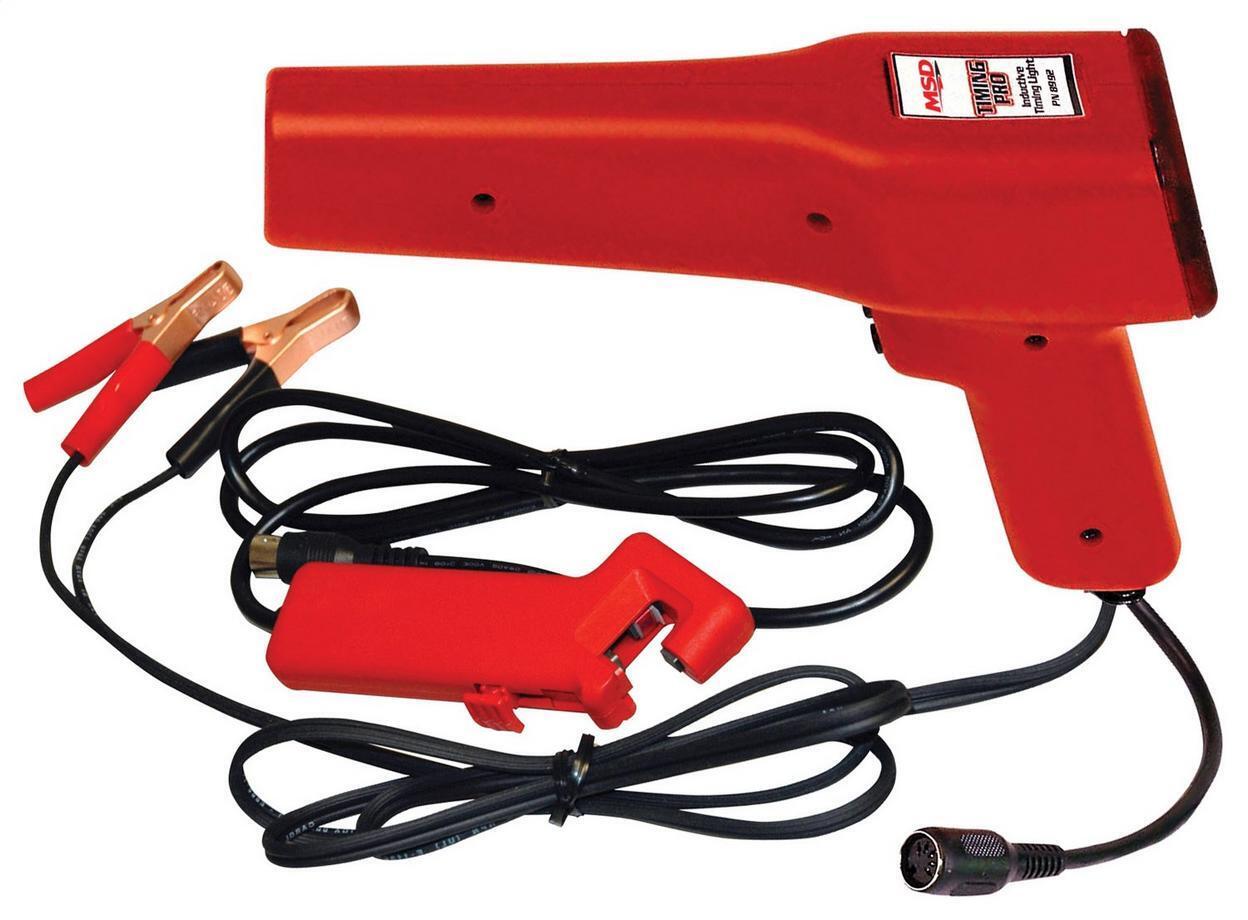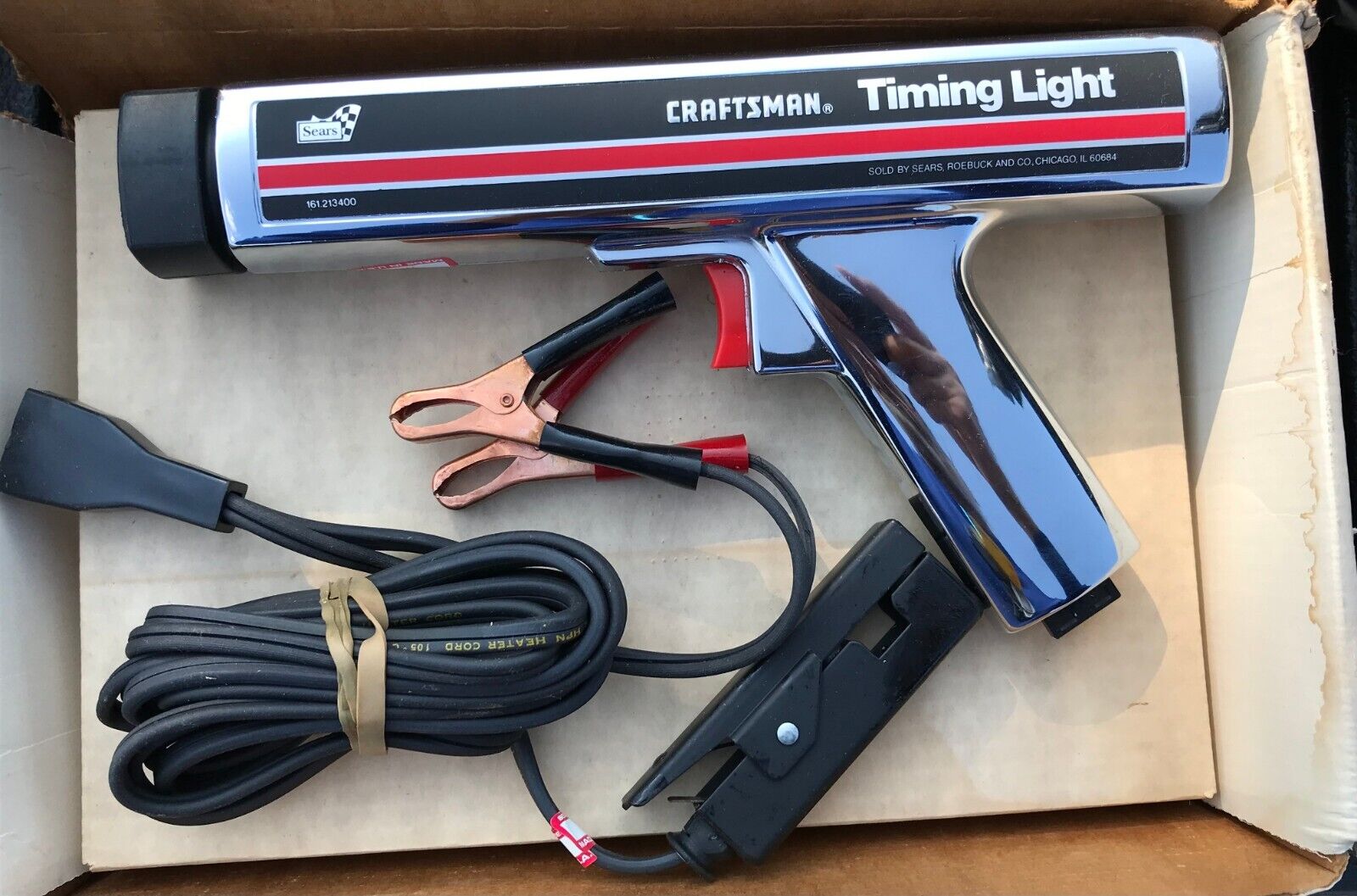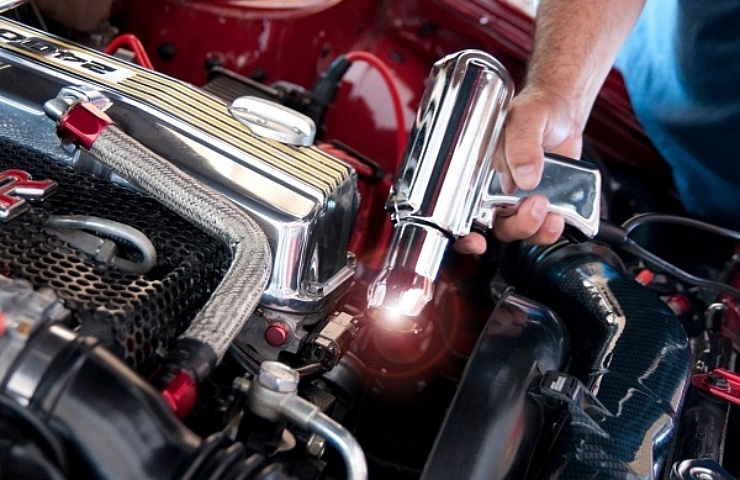Contents
The device is used primarily in older vehicles that have a distributor. It sends high-voltage electrical power to each cylinder’s spark plug. Newer cars do not use a distributor ignition system. Instead, they use a computer to control the ignition process.
What Is Ignition Timing?
Proper engine timing is essential for maximum engine performance. Fuel in the cylinder head should ignite at a precise time to force the piston down. If that timing is incorrect, the engine will produce less power, reach higher temperatures, and experience reduced fuel efficiency. Igniting fuel too soon or late can even damage your engine.
- An engine timing light sets the engine at the precise number of degrees below the top dead center (TDC).
- The spark from the distributor is sent to the number-one cylinder in your vehicle’s engine.

Setting the timing on a classic Volkswagen Beetle with an INNOVA Pro Timing Light
TDC is the highest point within the engine cylinder chamber that each piston reaches during the compression stroke. Whether the engine has four, six, or eight cylinders, TDC can refer to any piston on the cylinder compression or exhaust stroke. When using a timing light, it is critical to use TDC on the number-one piston on the compression stroke.
Conveniently, top dead center is indicated at the front of the engine via the harmonic balancer at the leading edge of the crankshaft. A groove on the harmonic balancer lines up with a pointer mounted to the engine block or timing chain cover, and when the groove aligns precisely with the pointer, the engine is at TDC.
When the timing light is connected correctly to a running engine, it emits a strobe flash every time the number-one spark plug wire receives voltage from the ignition distributor via the attached inductive signal clamp connection.
When holding the timing light and pointing at the harmonic balancer, the strobing timing light gives off a bright flash of light, illuminating the top-dead-center groove on the balancer. That groove, when illuminated, will appear next to the marks on the timing pointer. You can adjust the engine timing by slightly rotating the distributor to the precise timing advance.
Timing adjustments are measured in degrees, and changes are made by advancing or moving back the timing by a few degrees. These numbers on the engine’s crankshaft pulley or flywheel are notched like a ruler to guide you toward precise adjustment.
You’ll need to compare the numbers you see to the manufacturer’s recommendations, but you won’t find this info in the owner’s manual. Refer to the manufacturer’s website, the shop manual, or listings from professional mechanics.
Types of Timing Lights
Timing lights are commonly shaped like a raygun but can also look like a bell or a pen. There are three types: standard, battery-powered, and MSD-compatible.

MSD Pro Timing Light
Standard – Timing lights for two- and four-cycle motors use a xenon light. Buttons or a knob adjust the light to reveal the engine timing at various rpm. They use two wires—one red and one black—connected to the battery. A third wire connects to the signal’s number-one spark plug wire.
Battery-powered – This timing light doesn’t use the vehicle’s battery for power. It is mainly used for racing or other unique vehicles that don’t have batteries and leads in the engine compartment. It uses a single connection to the number-one spark plug wire.
MSD-compatible – These are used for vehicles with a multi-spark distribution system.
Shop now for timing lightsHow to Use a Timing Light
- Turn off the engine.
- If using the standard timing light, attach the red cable from the timing light to the positive battery terminal and the black cable to the negative terminal.
- Attach the inductive wire clamp to the number-one spark plug wire. Ensure none of the wires and cables are in the way of the engine’s moving parts—belts, fans, pulleys—or hot surfaces, such as the exhaust manifold.
- Loosen the distributor cap enough that you can barely twist it. Do not remove the distributor. When you rotate the distributor, you adjust the timing.
- Disconnect the vacuum hose, clamping it so it doesn’t interfere with the readings.
- Start the vehicle’s engine.
- Shine the timing light at the timing numbers on the crankshaft pulley. You’ll see a number displayed when the strobe light flashes. The strobing effect will cause one of the timing numbers to appear steady as the engine runs. Compare this number to the manufacturer’s recommendations.
- Make adjustments in small increments until the timing is correct. It might take trial and error the first time, but you’ll quickly get a feel for it.
- Once you’ve made the correct adjustments, use a wrench to tighten the distributor.
- Reattach the vacuum hose and recheck the timing.
- Repeat the steps if necessary until the numbers are correct.
Do You Need a Timing Light?
Common symptoms of engine timing issues include running rough with a shudder, an audible knock, or thumping. This could be due to the engine timing being off or something more serious.

Vintage Craftsman timing light
If your vehicle is older and has a distributor, using a timing light is generally enough to determine what’s wrong. A timing light will be useless if it’s a later-model vehicle with computerized controls rather than a distributor.
A mechanic will charge you twice: once for diagnosing your engine’s particular problem and again for fixing the problem. You could save money by diagnosing the problem yourself. With a bit of practice, using a timing light is pretty straightforward.
New timing lights cost as little as $25 and can go up to $200. The price depends on whether it has manual or digital measurement readings, plus the number of features it can measure.
Shop now for timing lights




